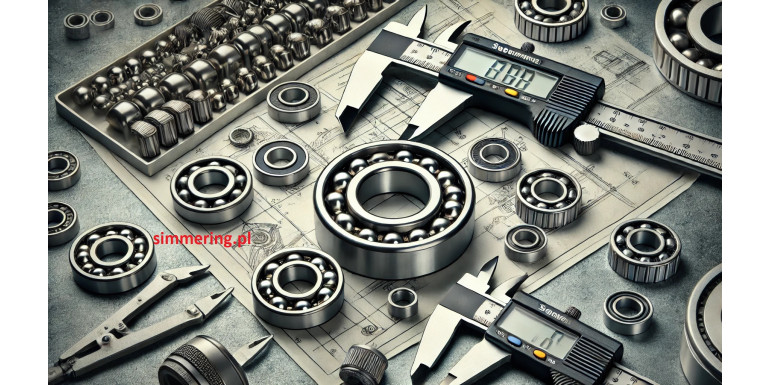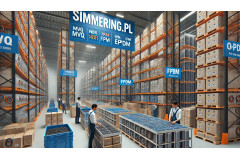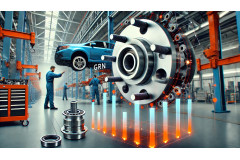
What Are Ball Bearings? Understanding Their Importance and Varieties
Introduction to Ball Bearings
Ball bearings are a crucial component in numerous mechanical systems, offering a way to reduce friction between moving parts and support loads—both radial (perpendicular to the axis) and axial (along the axis). By utilizing spherical balls to separate two bearing races, ball bearings allow for smooth rotational movement, contributing to the efficient operation of machinery across various industries.
Historical Overview of Ball Bearings
The development of ball bearings dates back to the 18th century. Phillip Vaughan, a Welsh inventor, was the first to patent a design for ball bearings in 1794. This innovation featured a ball rolling within a groove in an axle, significantly reducing friction in machinery. In 1869, Jules Suirray, a French mechanic, advanced this concept with the creation of the radial ball bearing, which played a vital role in improving the performance of early bicycles.
Today, ball bearings are an indispensable part of countless systems, from household appliances to industrial machines, facilitating smoother operation and extending the life of equipment.
Types of Ball Bearings and Their Applications
Ball bearings come in several distinct types, each suited to specific operational conditions and load capacities. Below are the most common types of ball bearings and the industries where they are used:
1. Angular Contact Ball Bearings Angular contact ball bearings are designed to handle both radial and axial loads, where the inner and outer raceways are offset relative to the bearing axis. This allows them to support combined loads effectively. These bearings are typically used in applications requiring precision, such as machine tools and electric motors.
- Common Applications: Compressors, metal rolling mills, vehicle hub bearings, electric generators.
2. Deep Groove Ball Bearings Deep groove ball bearings are the most commonly used type due to their versatility and ability to handle significant radial loads. Their deep raceways and close conformity to the ball allow them to operate at high speeds with minimal friction.
- Common Applications: Electric motors, automotive engines, office machinery, garden tools.
3. Axial (Thrust) Ball Bearings Axial ball bearings are primarily designed to support axial loads (parallel to the axis). They consist of shaft-locating and housing-locating washers and are commonly used in applications where there is no need to accommodate radial forces.
- Common Applications: Machine tools, agriculture, printing presses, wind energy systems.
4. Self-Aligning Ball Bearings Self-aligning ball bearings feature an inner ring with a spherical outer ring, allowing them to compensate for misalignments between the shaft and housing. They are ideal for systems where perfect alignment cannot be guaranteed, such as long shafts.
- Common Applications: Gearboxes, transmission systems.
5. Linear Ball Bearings Linear ball bearings facilitate motion along a linear path rather than rotational. They are typically used in precision applications that require smooth movement across a single axis, such as in robotics or medical equipment.
- Common Applications: Robotic assembly, X-ray and imaging devices, cabinetry.
6. Miniature Ball Bearings Miniature ball bearings are small, often less than 9mm in diameter, and are used in applications that require lightweight and compact components. These bearings are often made from stainless steel and are designed for low-load environments.
- Common Applications: Gyros, flow meters, miniature motors, radio-controlled models.
How to Select the Right Ball Bearing for Your Application
Choosing the correct ball bearing depends on several factors, including the load type, speed, alignment accuracy, and the environmental conditions in which the bearing will operate. Here’s a breakdown of the key factors:
- Load Type: Determine whether the bearing will primarily handle radial, axial, or combined loads.
- Speed Requirements: High-speed applications typically require deep groove or angular contact ball bearings.
- Environmental Conditions: Consider temperature extremes, exposure to moisture, or the presence of chemicals when selecting bearing materials like steel, stainless steel, or plastics.
Common Bearing Sizes and Materials
Ball bearings come in various standard sizes based on inner diameter (ID), outer diameter (OD), and width. The most common series include the 6000, 6200, and 6300 series, with bore diameters ranging from 10mm to 100mm. Materials used in ball bearings include:
- Steel: The most common material, offering durability and fatigue resistance.
- Stainless Steel: Provides corrosion resistance, making it ideal for environments exposed to moisture or chemicals.
- Plastic: Lightweight and corrosion-resistant, suitable for low-load applications.
Bearing Identification Codes
Ball bearings often come with identification codes that provide information about their type, series, bore size, and additional features like seals. For example:
- Bearing Code Example - 6202 2RS:
- 6: Single row deep groove ball bearing.
- 2: Light series.
- 02: 15mm bore diameter.
- 2RS: Sealed on both sides.
Conclusion: The Versatility and Importance of Ball Bearings
Ball bearings are an essential element in mechanical systems, enabling smooth and reliable motion while reducing wear and tear. Their applications span across a broad spectrum of industries, from automotive to robotics, ensuring that machinery operates efficiently. At Simmering.pl, we offer a wide range of ball bearings, from deep groove to angular contact, designed to meet the specific needs of your equipment.
By selecting the right type of bearing for your application, you can ensure optimal performance, reduce maintenance costs, and extend the life of your machinery.
Keywords:
ball bearings, deep groove ball bearings, angular contact bearings, self-aligning bearings, thrust ball bearings, industrial bearings, automotive bearings, precision bearings, Simmering.pl, radial loads, axial loads.




Leave a Reply Cancel Reply